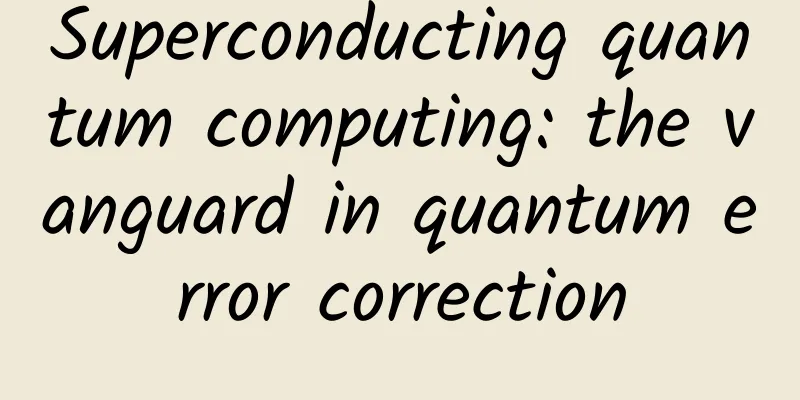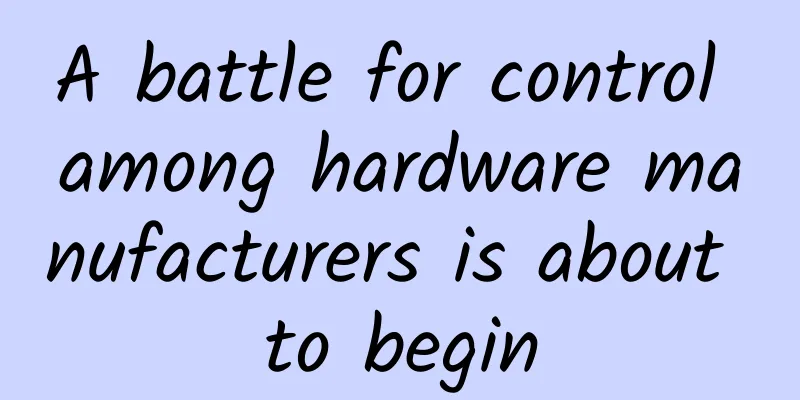Superconducting quantum computing: the vanguard in quantum error correction

|
Produced by: Science Popularization China Author: Luan Chunyang (School of Science, National University of Defense Technology) Wu Wei (School of Science, National University of Defense Technology) Wang Yutong (PhD in Physics, Tsinghua University) Producer: China Science Expo As expected, there is big news again in the research field of superconducting quantum computing! On December 9, 2024, a research team from Google Quantum AI successfully developed a new generation of superconducting quantum computing chip "Willow", which attracted widespread attention from academia and industry. The relevant research results were published online in the world's top academic journal Nature under the title of "Quantum error correction below the surface code threshold". The birth of the Willow superconducting quantum computing chip means that the quantum error correction problem that has troubled scientists for nearly 30 years has finally ushered in the dawn of success! Figure 1 Research results of the new generation of superconducting quantum computing chip "Willow" (Image source: Reference [1]) So, what is the "quantum error correction" problem that has troubled scientists for so long? Why does the successful development of the Willow superconducting quantum computing chip make scientists so excited? So, readers, please keep your curiosity and join us in unveiling the mystery of the superconducting quantum computing chip! Quantum error correction: the bottleneck problem of quantum computing Calculation errors are an inevitable problem in computing, and are even more obvious in quantum computing. This is because the basic computing unit of quantum computing, the qubit, is very sensitive to noise and interference from the external environment. Therefore, it is easy for qubits to make operational errors in the actual quantum computing process, making it difficult to output stable and reliable computing results. In other words, although quantum computing has a powerful parallel computing power that surpasses classical computers in processing specific tasks, quantum computers are prone to errors and are still in the "noisy intermediate-scale quantum (NISQ)" stage . In order to solve the problem of quantum computers being prone to computational errors, scientists have proposed the concept of "quantum error correction", the main goal of which is to enable quantum computing to identify and correct actual computational errors without disrupting the computing process, thereby outputting stable and reliable computational results. Therefore, quantum error correction is considered a necessary condition for building a truly practical quantum computer, and it is also the "bottleneck" problem facing quantum computing today. In fact, as early as 1995, physicist Peter Shor proposed the concept of quantum error correction. The core idea is to encode multiple physical quantum bits that are particularly sensitive to external interference into a very reliable "logical quantum bit" to achieve the encoding protection of information. In this way, scientists can use some of the physical quantum bits to identify the overall state of this "logical quantum bit" and decide to adopt an appropriate solution to correct the operation errors that occur. It should be noted that "logical qubit" is an abstract physical concept, which is composed of multiple physical qubits working together, and can protect quantum information through encoding and error correction technologies. Therefore, the computing performance of "logical qubit" is better than that of physical qubit, and it is considered to be a truly practical qubit. Just like "putting the elephant in the refrigerator", the quantum error correction scheme can also be broken down into the following three steps: 1. Quantum coding: Encode the quantum information of a single quantum bit into multiple physical quantum bits to form a "logical quantum bit". The purpose of this is that even if some physical quantum bits are wrong, the quantum information of the entire "logical quantum bit" can still be retained; 2. Quantum error detection: Only some of the physical qubits are measured to identify the location and type of error without destroying the quantum information stored in the "logical qubits"; 3. Quantum error correction: Based on the detected errors, scientists will use specific quantum error correction algorithms to ensure that the errors are effectively corrected, thereby reducing the overall computational error rate. Ideally, the more physical quantum bits are involved in the quantum error correction scheme, the more reliable the "logical quantum bit" will be, and the overall computational error rate will be reduced. However, the ideal is beautiful, but the reality is very bleak. Since physical quantum bits themselves also have a certain error rate and are limited by the precision of quantum manipulation, in the actual large-scale quantum error correction process, it is very likely that the embarrassing situation of "the more you correct, the more errors you will get" will occur. Figure 2 Artistic diagram of quantum error correction (Photo source: veer photo gallery) Therefore, in order for "logical qubits" to perform better than physical qubits, the error rate of physical qubits needs to be lower than a certain threshold. Only in this way can the quantum error correction scheme change from "the more you correct, the more errors you make" to the ideal goal of "the more you correct, the better". Superconducting quantum computing: the vanguard in quantum error correction Before formally introducing how to perform quantum error correction, let us first review this familiar old friend - superconducting quantum computing. Simply put, the core component of superconducting quantum computing is the Josephson junction, whose nonlinear characteristics enable certain specific energy levels to be encoded into physical quantum bits, thus forming the basic computing unit of superconducting quantum computing. At the same time, in order to keep the Josephson junction working effectively, the superconducting quantum computing system needs to be operated in an extremely low temperature environment of minus 273.12℃ or lower. Figure 3 Artistic diagram of superconducting quantum computing (Photo source: veer photo gallery) So, what unique advantages does superconducting quantum computing have that makes it the "vanguard" in quantum error correction? First, the superconducting quantum computing solution is compatible with today's mainstream integrated circuit processes, and has advantages such as short development cycles and high scalability. Therefore, scientists can prepare enough physical quantum bits in superconducting quantum computing systems to meet the scale requirements of quantum error correction. Secondly, with the advancement of technology and the improvement of control capabilities, the accuracy of superconducting quantum computing has been significantly improved. Today, the error rate of single-qubit gates in superconducting quantum computing schemes is less than 0.092%, and the highest fidelity of double-qubit gates can exceed 99%, thus meeting the requirements of precise physical qubits required for quantum error correction. It is precisely because of the above two advantages that superconducting quantum computing is considered to be an ideal platform for realizing quantum error correction, and it has demonstrated its capabilities in the field of quantum error correction. Google Willow quantum computing chip - a milestone in quantum error correction As early as 2019, Google's quantum artificial intelligence research team successfully developed a superconducting quantum computing chip called "Sycamore" with 53 quantum bits, and claimed to have achieved "quantum supremacy", which is regarded as an important moment in the history of quantum computing development. Figure 4 In 2019, Google developed the superconducting quantum computing chip "Sycamore" (Image source: Reference [3]) Compared with the previous generation superconducting quantum computing chip "Sycamore", the new Willow superconducting quantum computing chip not only has all the advantages of the former, but also has achieved significant improvements in the scale and performance of quantum bits. Specifically, the Willow superconducting quantum computing chip has up to 105 superconducting qubits, which is nearly twice the number of the previous generation of quantum computing chips. More importantly, the qubit error rate in the Willow superconducting quantum computing chip is significantly suppressed, with the average error rate of single-qubit gates being only 0.035%, and the average error rate of double-qubit gates being only 0.33%. This means that this new quantum computing chip is particularly suitable for quantum error correction and is expected to achieve large-scale expansion for practical applications. The research results show that as the number of superconducting quantum bits increases, the error rate of Willow superconducting quantum computing chip decreases exponentially, which means that the so-called "the more correction, the more correct" is achieved. This means that Willow superconducting quantum computing chip is the world's first quantum computing system that can reduce the error rate of operations while increasing the number of quantum bits, which is also regarded as a "milestone" event in quantum error correction. Figure 5 In December 2024, the superconducting quantum computing chip "Willow" developed by Google (Image source: Google Quantum AI) A hundred boats compete in the current: the Chinese power that has never been absent It is worth mentioning that on December 17, 2024, a research team from the University of Science and Technology of China also successfully developed a new "Zu Chongzhi No. 3" superconducting quantum computing chip. Its research results were titled "Establishing a New Benchmark in Quantum Computational Advantage with 105-qubit Zuchongzhi 3.0 Processor" and have been uploaded to the preprint library arXiv. The research results show that the "Zu Chongzhi No. 3" superconducting quantum computing chip also has up to 105 superconducting quantum bits, which is comparable to the Willow superconducting quantum computing chip in various performance indicators. At present, the research team is carrying out relevant tests based on the "Zu Chongzhi No. 3" superconducting quantum computing chip to pave the way for large-scale quantum error correction and quantum bit manipulation. Figure 6 In December 2024, the research team of the University of Science and Technology of China also successfully developed a new "Zu Chongzhi No. 3" superconducting quantum computing chip (Photo source: USTC News) In fact, Chinese power has never been absent in the international competition in the strategic field of quantum computing. As early as 2021, a research team from the University of Science and Technology of China developed an early domestic superconducting quantum computing chip "Zu Chongzhi" with 62 superconducting qubits, also achieving "quantum supremacy", which is considered an important moment in the history of China's quantum computing development. The relevant research results were published in the top international academic journal "Science" under the title "Quantum walks on a programmable two-dimensional 62-qubit superconducting processor". Then in 2022, the research team implemented an error-correcting surface code consisting of 17 quantum bits on the "Zu Chongzhi No. 2", an upgraded version of the "Zu Chongzhi", and realized repeated error correction of the surface code for the first time. This study proved for the first time that superconducting quantum computing can use surface codes for repeated quantum error correction. The relevant research results were published in the top physics journal "Physical Review Letters" under the title "Realization of an Error-Correcting Surface Code with Superconducting Qubits". In 2023, a research team from the Southern University of Science and Technology also made breakthrough progress in the study of quantum error correction in superconducting quantum computing. The research team adopted a real-time repeated quantum error correction scheme to extend the storage time of quantum information, surpassing the break-even point for the first time in the world, demonstrating the great practical value of quantum error correction. The relevant research results were published in the top international academic journal Nature under the title "Beating the break-even point with a discrete-variable-encoded logical qubit". Conclusion To sum up, quantum computing, as an interdisciplinary field combining quantum mechanics and information science, is one of the latest development directions of quantum mechanics and is considered to be an important symbol of the "second quantum revolution." At present, quantum computing is at a critical juncture of scientific and technological breakthroughs and international competition. It has great scientific significance and strategic value, and has attracted widespread attention from major scientific and technological powers around the world. A large number of commercial technology giants and top quantum research institutions have emerged. Among them, the two major physical implementation schemes represented by superconducting quantum computing systems and ion trap quantum computing systems are considered by the scientific community to be the mainstream technical routes for realizing quantum computing. It can be said that we are now at the dawn of the "second quantum revolution" and international competition is intensifying. So, in addition to the superconducting quantum computing system we are familiar with, what key role does the ion trap quantum computing system play? Please keep your curiosity, and let us explore more quantum mysteries together in the next article! References: [1] Acharya R, Aghababaie-Beni L, Aleiner I, et al. Quantum error correction below the surface code threshold[J]. Nature (2024). https://doi.org/10.1038/s41586-024-08449-y [2] Shor P W. Scheme for reducing decoherence in quantum computer memory[J]. Physical review A, 1995, 52(4): R2493. [3] Arute F, Arya K, Babbush R, et al. Quantum supremacy using a programmable superconducting processor[J]. Nature, 2019, 574(7779): 505-510. [4] Gao D, Fan D, Zha C, et al. Establishing a New Benchmark in Quantum Computational Advantage with 105-qubit Zuchongzhi 3.0 Processor[J]. arxiv preprint arxiv:2412.11924, 2024. [5] Gong M, Wang S, Zha C, et al. Quantum walks on a programmable two-dimensional 62-qubit superconducting processor[J]. Science, 2021, 372(6545): 948-952. [6] Zhao Y, Ye Y, Huang HL, et al. Realization of an error-correcting surface code with superconducting qubits[J]. Physical Review Letters, 2022, 129(3): 030501. [7] Ni Z, Li S, Deng X, et al. Beating the break-even point with a discrete-variable-encoded logical qubit[J]. Nature, 2023, 616(7955): 56-60. |
<<: Super bacteria are not "hexagonal warriors", their fatal weakness is... | Technology Weekly
>>: How to deal with this skin disease that sounds like a plant name?
Recommend
GITC——Annual gathering of China's Internet technology elites
[[120838]] GITC 2014 Global Internet Technology C...
Everyone is talking about communities, how do we build them? How to operate a community? How to monetize the community?
Products must be innovative, solve problems and r...
Do people spend more than 200 days in the toilet in their lifetime? Let's see what terrible diseases toilet renovations prevent! Severe ones can be fatal!
If we calculate based on a life span of 80 years,...
China CDC: Currently more than 99% of influenza viruses are influenza A! Urgent reminder →
Winter is the peak season for respiratory disease...
WeChat red envelope cover is spreading from person to person! This time it really "cracked"
During festivals, many people will distribute red...
Windows 10 Build 9860 is here and can only be updated via Update
On Tuesday, Microsoft updated the technical previ...
Apple's decline
"Is there any signal?" two Apple users ...
"2019 China Automobile Product Quality Performance Study" deeply analyzes the overall quality performance and trends of domestic mainstream automobile products
In order to solve consumer pain points, help OEMs...
Tik Tok promotion and monetization operation tutorial!
This video software, which has become extremely p...
Hot search! E. coli was detected in ice cream. Does it mean it is contaminated by feces? Can we still eat it safely?
Recently, a media report said that half of the ic...
DSP advertising skills and precautions!
1. Advertising skills When collecting knowledge a...
All questions about airplanes are answered at once, so you can show off your knowledge next time you take a plane
Why are airplanes afraid of birds? Does a plane m...
Increase conversion rate by 33%, do this for online consultation on landing pages!
From 2017 to now, the ocpx optimization tools for...
Communication overview based on 10w+ articles: igniting hot spots and creating storms
Just like the three advantages of Loli: clear voi...








![[Popular Science of Chinese Military Technology] Unmanned combat vehicles speeding towards the battlefield](/upload/images/67f24f76255cf.webp)
